Terrestrial Ecology
-
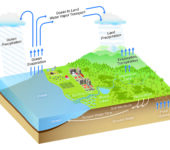
-
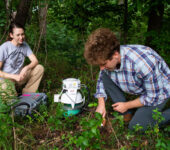
Joint Global Change Research Institute Field Work
Researchers measure methane and carbon dioxide emitted from coastal forest soil.
-
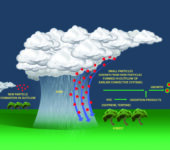
New Particle Formation
New particles form in the outflow region of earlier convective clouds, leading to high concentrations of small particles in the free troposphere. These small particles are injected into the boundary layer by the downward motions in the convective system, where they interact with volatile organic compounds (VOCs) and other gases emitted by vegetation from the Earth’s surface to grow and become cloud condensation nuclei.
-
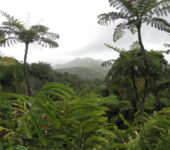
NGEE Tropics Field Site
Next-Generation Ecosystem Experiments (NGEE) Tropics field site in Puerto Rico.
-
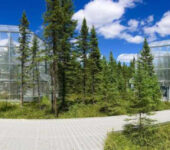
Spruce and Peatland Responses Under Changing Environments
The Spruce and Peatland Responses Under Changing Environments (SPRUCE) research site located in northern Minnesota. The SPRUCE site is part of the Terrestrial Ecosystem Science Science Focus Area.
-
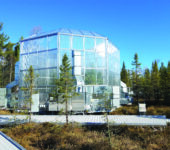
SPRUCE Experiment
Ten enclosures are being used in the Spruce and Peatland Responses Under Changing Environment (SPRUCE) experiment to expose a bog in northern Minnesota to a range of warming treatments in combination with elevated atmospheric CO2. The experiment takes place in the U.S. Forest Service’s Marcell Experimental Forest.
-
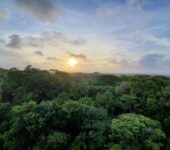
Terrestrial Ecology Landscape
Collaborating Across Environmental Science Domains. Terrestrial Ecology, Watershed Sciences, and Coastal Systems make up the three domains of the BER Environmental System Science program.
-
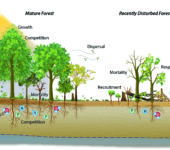
Vegetation Dynamics Affecting Ecosystems
Vegetation Dynamics Affecting Structural Properties and Biogeochemical Functioning of Ecosystems. These dynamic processes include plant growth, mortality and recruitment, seed dispersal, and competition among individuals and species for light, water, and soil nutrients such as nitrogen and phosphorus. Physical and biotic disturbances alter vegetation structure and trajectories of vegetation dynamics, as can chronic environmental changes.
-
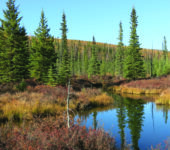
Black Spruce Forest
Black spruce forest in the Caribou Poker Creeks Research Watershed, Alaska.
-
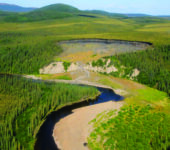
Large Thermokarst in Alaska
Large thermokarst along the Selawik River in Northwest Alaska.